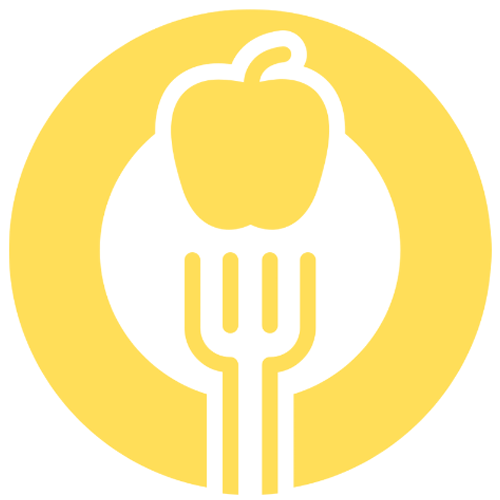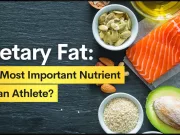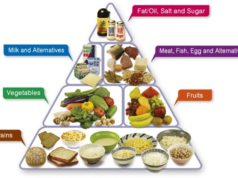What does diet mean? Beyond just a list of foods to eat or avoid, “diet” encompasses a multifaceted concept that intertwines with our health, culture, and even the environment. It’s not merely about weight loss or specific food plans, but rather a reflection of our choices and their impact on our well-being.
The word “diet” itself carries a diverse range of meanings in everyday language. From a specific meal plan designed for weight management to dietary restrictions imposed due to allergies or medical conditions, “diet” can be both a personal choice and a necessity. Understanding the nuances of this term is crucial for navigating the vast world of nutrition and making informed decisions about our eating habits.
Definition of Diet: What Does Diet Mean
The word “diet” has a wide range of meanings, often leading to confusion. While it’s commonly associated with weight loss or specific food plans, it encompasses a broader spectrum of concepts.
Different Uses of “Diet”
The term “diet” can be used in various contexts, often depending on the situation and intended meaning.
- Food and Nutrition: This is the most common usage, referring to the types and amounts of food a person regularly consumes. This can be a general description, like “a balanced diet,” or a specific plan, like “the Mediterranean diet.”
- Dietary Restrictions: “Diet” can also refer to specific food limitations, such as those related to allergies, medical conditions, or religious beliefs. For instance, someone might be on a “gluten-free diet” or a “vegan diet.”
- Weight Management: “Diet” is often associated with weight loss or weight maintenance. This usage typically involves a planned reduction in calorie intake or specific food choices designed to achieve a particular weight goal.
- General Lifestyle: In a broader sense, “diet” can encompass overall lifestyle choices that affect health, including physical activity, sleep patterns, and stress management.
Examples of Specific Diets
Here are some examples of specific diets that illustrate the different ways “diet” is used:
- The Mediterranean Diet: This diet emphasizes fruits, vegetables, whole grains, legumes, olive oil, and fish. It’s often associated with a reduced risk of heart disease and other chronic conditions.
- The DASH Diet: The Dietary Approaches to Stop Hypertension (DASH) diet is designed to lower blood pressure. It focuses on fruits, vegetables, low-fat dairy, and whole grains.
- The Ketogenic Diet: This diet is high in fat and very low in carbohydrates. It forces the body to burn fat for energy instead of glucose, potentially leading to weight loss.
- The Paleo Diet: The Paleo diet aims to mimic the eating habits of our hunter-gatherer ancestors. It emphasizes whole foods, such as meat, fish, vegetables, and fruits, while avoiding processed foods, grains, and dairy.
Diet and Nutrition
Diet and nutrition are inextricably linked, forming the foundation of our health and well-being. Our diet encompasses the foods and beverages we consume, while nutrition refers to the process by which our bodies utilize the nutrients present in those foods. A balanced diet provides our bodies with the essential nutrients they need to function optimally.
The Importance of a Balanced Diet
A balanced diet is crucial for maintaining overall health. It provides our bodies with the necessary energy, building blocks, and regulatory compounds for growth, repair, and proper functioning. A balanced diet should include a variety of foods from all food groups in appropriate proportions.
- Carbohydrates: Provide energy for our bodies, particularly for brain function and physical activity. Good sources include whole grains, fruits, and vegetables.
- Proteins: Essential for building and repairing tissues, producing enzymes and hormones, and supporting immune function. Good sources include lean meats, poultry, fish, beans, lentils, and eggs.
- Fats: Provide energy, insulate organs, and help absorb vitamins. Good sources include avocados, nuts, seeds, and olive oil.
- Vitamins and Minerals: Vital for a wide range of bodily functions, including energy production, immune function, and cell growth. Good sources include fruits, vegetables, whole grains, and dairy products.
Essential Nutrients and Their Roles in the Body
Each nutrient plays a specific role in maintaining our health:
- Vitamin C: An antioxidant that helps protect cells from damage, supports collagen production, and boosts immunity. Good sources include citrus fruits, strawberries, and broccoli.
- Calcium: Essential for strong bones and teeth, muscle function, and nerve transmission. Good sources include dairy products, leafy green vegetables, and fortified foods.
- Iron: Necessary for red blood cell production, which carries oxygen throughout the body. Good sources include red meat, poultry, fish, beans, and lentils.
- Fiber: Promotes digestive health, helps regulate blood sugar levels, and may reduce the risk of heart disease. Good sources include whole grains, fruits, vegetables, and legumes.
Types of Diets
The world of diets is vast and varied, offering a multitude of approaches to achieving health and wellness goals. From weight loss to disease prevention, each diet type aims to address specific needs and preferences. Understanding the principles and guidelines of different diets can help individuals make informed choices about their dietary habits.
Categorization of Diets
Diets can be categorized based on various factors, including their focus, restrictions, and underlying principles. Some common categories include:
- Weight-Loss Diets: These diets aim to promote weight reduction through calorie restriction, macronutrient manipulation, or specific food choices. Examples include the ketogenic diet, the Mediterranean diet, and the DASH diet.
- Disease-Specific Diets: These diets are tailored to manage specific health conditions, such as diabetes, heart disease, or celiac disease. They often involve restrictions on certain foods or nutrients to address the underlying medical concerns.
- Lifestyle Diets: These diets emphasize overall healthy eating habits and promote long-term sustainable changes. Examples include the vegan diet, the vegetarian diet, and the flexitarian diet.
- Fad Diets: These diets often involve extreme restrictions or unusual food combinations and promise rapid weight loss. While they may provide short-term results, they are often unsustainable and can be harmful to health.
Popular Diet Types
Several popular diet types have gained widespread attention for their purported benefits. These diets often have specific principles and guidelines that dictate food choices and eating patterns.
| Diet Type | Description | Benefits | Potential Drawbacks |
|---|---|---|---|
| Ketogenic Diet | A high-fat, low-carbohydrate diet that forces the body to enter a state of ketosis, where it burns fat for energy instead of glucose. | May promote weight loss, improve insulin sensitivity, and reduce inflammation. | Can lead to nutrient deficiencies, digestive issues, and kidney problems. |
| Mediterranean Diet | A diet rich in fruits, vegetables, whole grains, olive oil, and fish, with moderate consumption of dairy products and red meat. | May reduce the risk of heart disease, stroke, and type 2 diabetes. | May be challenging to follow long-term, especially for those who live outside of the Mediterranean region. |
| DASH Diet | A diet designed to lower blood pressure, emphasizing fruits, vegetables, whole grains, and low-fat dairy products, while limiting saturated and unhealthy fats. | May reduce blood pressure, improve cholesterol levels, and promote weight loss. | May require significant dietary changes and may be difficult to follow for those with limited access to fresh produce. |
| Intermittent Fasting | A pattern of eating that involves alternating periods of eating and fasting. | May promote weight loss, improve insulin sensitivity, and reduce inflammation. | Can lead to fatigue, headaches, and difficulty concentrating during fasting periods. |
Diet and Health Conditions

Diet plays a crucial role in maintaining overall health and well-being. It can significantly impact the development and management of various health conditions. Understanding how diet affects specific health conditions is essential for promoting better health outcomes.
Diabetes
Diabetes is a chronic condition characterized by high blood sugar levels. This occurs when the body either doesn’t produce enough insulin or can’t use insulin properly. Insulin is a hormone that helps glucose (sugar) enter cells for energy. Dietary changes can help manage blood sugar levels and prevent complications associated with diabetes.
- Carbohydrate Control: Individuals with diabetes should focus on consuming carbohydrates slowly and consistently throughout the day. Choosing complex carbohydrates like whole grains, fruits, and vegetables over simple carbohydrates like refined grains and sugary drinks helps regulate blood sugar levels.
- Portion Control: Maintaining portion sizes helps prevent blood sugar spikes. Eating smaller, more frequent meals throughout the day can help regulate blood sugar levels.
- Fiber Intake: Fiber slows down the absorption of sugar into the bloodstream, helping regulate blood sugar levels. Foods rich in fiber include whole grains, fruits, vegetables, and legumes.
- Healthy Fats: Choosing unsaturated fats from sources like olive oil, avocados, and nuts over saturated and trans fats can improve insulin sensitivity and blood sugar control.
Heart Disease
Heart disease is a leading cause of death worldwide. It encompasses various conditions that affect the heart and blood vessels, such as coronary artery disease, heart attack, and stroke. Diet plays a significant role in heart health, and making dietary changes can help reduce the risk of developing or worsening heart disease.
- Saturated and Trans Fat Reduction: Saturated and trans fats raise LDL (bad) cholesterol levels, increasing the risk of heart disease. Limiting consumption of fatty meats, processed foods, and fried foods is essential.
- Sodium Reduction: High sodium intake can contribute to high blood pressure, a major risk factor for heart disease. Reducing processed foods, fast food, and salty snacks can help lower sodium intake.
- Increased Fruit and Vegetable Consumption: Fruits and vegetables are rich in fiber, vitamins, and minerals that promote heart health. Aim for at least five servings of fruits and vegetables daily.
- Healthy Fat Intake: Unsaturated fats, found in olive oil, avocados, nuts, and fatty fish, can help lower LDL cholesterol and raise HDL (good) cholesterol levels, improving heart health.
Obesity
Obesity is a complex condition characterized by excessive body fat accumulation, leading to health complications. Diet is a crucial factor in weight management and reducing the risk of obesity-related health issues.
- Calorie Control: Consuming fewer calories than the body burns is essential for weight loss. This involves making conscious choices about food intake and portion sizes.
- Nutrient-Dense Foods: Prioritizing nutrient-dense foods, such as fruits, vegetables, whole grains, and lean protein, provides essential nutrients without excessive calories.
- Sugar Reduction: Sugary drinks and processed foods are high in calories and contribute to weight gain. Reducing sugar intake can help manage weight and reduce the risk of obesity-related conditions.
- Regular Physical Activity: Regular physical activity is essential for weight management and overall health. Aim for at least 150 minutes of moderate-intensity aerobic activity or 75 minutes of vigorous-intensity aerobic activity per week.
Diet and Lifestyle
Diet and lifestyle are intricately intertwined, influencing each other in a complex interplay. A healthy diet provides the foundation for a vibrant and active lifestyle, while lifestyle choices, in turn, impact dietary habits and overall well-being. This section explores the connection between diet and various aspects of lifestyle, including physical activity, sleep patterns, and stress levels, highlighting the importance of a holistic approach to health.
Diet and Physical Activity
The relationship between diet and physical activity is multifaceted. A balanced diet provides the necessary nutrients and energy to fuel physical activity. Conversely, engaging in regular exercise enhances the body’s ability to utilize nutrients effectively and promotes a healthy metabolism.
Diet is essentially the food and drink we consume regularly, impacting our health and well-being. Understanding what constitutes a healthy diet is crucial, especially when considering conditions like high triglycerides. To manage these, you can explore strategies on how to lower triglycerides with diet , which often involve reducing saturated and trans fats, and increasing fiber intake.
Ultimately, a balanced diet, tailored to your individual needs, is key to maintaining optimal health.
- Fueling Exercise: A diet rich in carbohydrates, particularly complex carbohydrates found in whole grains, fruits, and vegetables, provides the body with readily available energy for workouts.
- Post-Exercise Recovery: Consuming adequate protein after exercise aids in muscle repair and growth, essential for maintaining and improving fitness levels.
- Hydration: Staying hydrated is crucial during and after exercise, and water is the primary source of hydration. Sports drinks can provide electrolytes for prolonged or intense workouts.
Incorporating physical activity into your daily routine can encourage healthier dietary choices. Regular exercise increases energy expenditure, making you more mindful of your calorie intake. Moreover, physical activity can reduce cravings for unhealthy foods and enhance your overall sense of well-being, motivating you to prioritize healthy eating habits.
Diet and Sleep
The link between diet and sleep is often overlooked but is essential for maintaining optimal health. Dietary choices can influence the quality and duration of sleep, while sleep deprivation can disrupt appetite regulation and lead to unhealthy food choices.
- Sleep-Promoting Nutrients: Consuming foods rich in tryptophan, an amino acid that the body converts into serotonin and melatonin, can promote relaxation and sleep. Examples include turkey, chicken, eggs, dairy products, and nuts.
- Avoiding Caffeine and Alcohol: Caffeine and alcohol can interfere with sleep patterns. Limiting caffeine intake, especially in the hours leading up to bedtime, and avoiding alcohol before sleep can improve sleep quality.
- Regular Meal Times: Maintaining a regular meal schedule can help regulate your body’s natural sleep-wake cycle. Avoid large meals close to bedtime, as they can disrupt digestion and sleep.
Getting enough sleep is crucial for maintaining a healthy appetite and making sound dietary choices. Sleep deprivation can disrupt the hormones that regulate hunger and satiety, leading to increased cravings for unhealthy foods and difficulty controlling portion sizes.
Diet, in essence, is about the food we choose to consume, impacting our overall health and well-being. It’s not just about losing weight, but about nourishing our bodies with the right nutrients. While exercise plays a crucial role, you might wonder if is running the best way to lose weight.
Ultimately, a balanced diet, incorporating a variety of healthy foods, is the foundation for a healthy lifestyle, regardless of your chosen exercise regimen.
Diet and Stress
Stress can significantly impact dietary habits. When stressed, individuals may turn to comfort foods high in sugar, fat, and calories, leading to unhealthy weight gain and other health issues. Conversely, a balanced diet can help manage stress levels and improve overall well-being.
Diet simply means the food and drink we consume on a regular basis. It’s not just about weight loss; it’s about nourishing our bodies and maintaining overall health. For those with diabetes, managing blood sugar levels is crucial, and finding the best diet to lose weight for diabetics can be a game-changer.
By making informed choices, we can ensure our diets support our well-being and help us achieve our health goals.
- Stress-Reducing Nutrients: Foods rich in omega-3 fatty acids, found in fatty fish like salmon and tuna, can help reduce inflammation and improve mood. Other stress-reducing nutrients include magnesium, found in leafy green vegetables, almonds, and avocado, and vitamin B, found in whole grains, legumes, and poultry.
- Mindful Eating: Paying attention to your food choices and eating mindfully can help manage stress-related eating. Take time to savor your meals, avoid distractions while eating, and focus on the flavors and textures of your food.
- Regular Meals: Maintaining a regular meal schedule can help stabilize blood sugar levels and prevent mood swings associated with hunger. Skipping meals can lead to increased stress and cravings for unhealthy foods.
By incorporating stress-reducing techniques into your lifestyle, you can improve your dietary habits. Regular exercise, meditation, and deep breathing exercises can help manage stress levels and promote healthy food choices.
Diet and Culture
Food is an integral part of human culture, and dietary practices are deeply intertwined with social, religious, and traditional beliefs. Culture significantly influences food choices, shaping what people eat, how they prepare it, and when they consume it.
Cultural Influences on Food Choices
Cultural influences on food choices are multifaceted, encompassing various aspects of life, such as tradition, religion, and social norms.
- Tradition: Traditional food practices are often passed down through generations, reflecting the history, geography, and resources of a particular culture. For example, in many Asian cultures, rice is a staple food due to its historical significance and suitability for the climate.
- Religion: Religious beliefs can have a profound impact on dietary practices. For instance, many religions have dietary restrictions, such as Hinduism’s avoidance of beef or Islam’s prohibition of pork.
- Social Norms: Social norms and expectations also influence food choices. For example, in some cultures, it is considered polite to offer food to guests, while in others, it may be seen as a sign of disrespect to refuse food.
Examples of Diverse Dietary Patterns
The world is home to a vast array of dietary patterns, each reflecting the unique cultural influences of its people.
- Mediterranean Diet: Characterized by a high intake of fruits, vegetables, whole grains, olive oil, and fish, the Mediterranean diet is associated with a lower risk of heart disease and other chronic conditions. It is prevalent in countries bordering the Mediterranean Sea, such as Greece, Italy, and Spain.
- Japanese Diet: The Japanese diet is known for its emphasis on fresh seafood, rice, vegetables, and fermented foods like miso and soy sauce. It is often associated with a lower risk of obesity and certain types of cancer.
- Indian Diet: The Indian diet is diverse and varies greatly depending on region and religion. It typically includes a wide range of spices, lentils, legumes, and grains.
Diet and Sustainability
Our dietary choices have a profound impact on the environment, contributing to issues like climate change, deforestation, and water pollution. A sustainable diet aims to minimize these negative effects while ensuring food security and healthy living for present and future generations.
Environmental Impact of Dietary Choices
The production, processing, transportation, and consumption of food all leave an environmental footprint. Different dietary choices have varying impacts:
- Meat Consumption: Animal agriculture is a significant contributor to greenhouse gas emissions, particularly methane, due to livestock digestion and manure management. Meat production also requires vast amounts of land, water, and resources, leading to deforestation, biodiversity loss, and water pollution.
- Dairy Products: Similar to meat, dairy production contributes to greenhouse gas emissions, land use, and water consumption. However, the environmental impact of dairy can vary depending on the farming practices and animal breeds.
- Plant-Based Foods: Plant-based diets generally have a lower environmental footprint compared to diets high in animal products. Fruits, vegetables, legumes, and grains require less land, water, and energy to produce, resulting in lower greenhouse gas emissions and a smaller ecological footprint.
Sustainable Agriculture and Responsible Food Production
Sustainable agriculture practices aim to minimize environmental impact while ensuring food security and economic viability. These practices include:
- Organic Farming: Organic farming prohibits the use of synthetic pesticides, fertilizers, and genetically modified organisms (GMOs), promoting biodiversity, soil health, and water quality.
- Agroecology: Agroecology focuses on integrating ecological principles into agricultural practices, emphasizing biodiversity, soil fertility, and pest management through natural methods.
- Regenerative Agriculture: Regenerative agriculture goes beyond sustainability by aiming to improve soil health, sequester carbon, and enhance biodiversity, contributing to climate change mitigation and ecosystem restoration.
Strategies for Adopting a More Environmentally Conscious Diet, What does diet mean
Individuals can contribute to a more sustainable food system by making conscious dietary choices:
- Reduce Meat Consumption: Consider reducing meat intake, opting for plant-based alternatives, or choosing sustainably sourced meat from farms with responsible practices.
- Choose Local and Seasonal Produce: Buying locally grown and seasonal fruits and vegetables reduces transportation distances, supports local farmers, and minimizes food waste.
- Minimize Food Waste: Plan meals, store food properly, and compost food scraps to reduce food waste, which contributes to greenhouse gas emissions and resource depletion.
- Support Sustainable Food Businesses: Patronize restaurants and food retailers committed to sustainable practices, such as organic farming, local sourcing, and waste reduction.
Last Point
Ultimately, the meaning of “diet” transcends simple food choices. It embodies a complex interplay between our individual needs, cultural influences, and environmental considerations. By understanding the diverse aspects of diet, we can empower ourselves to make informed decisions about our food choices and create a healthier, more sustainable future for ourselves and the planet.
Q&A
What is the difference between a diet and a food plan?
A “diet” often implies a specific set of rules or restrictions, while a “food plan” is more flexible and focuses on overall dietary patterns.
Is it okay to follow a diet for a long time?
The sustainability of a diet depends on its individual components and how it aligns with your lifestyle. It’s crucial to consult with a healthcare professional to determine the suitability of any long-term dietary changes.
Can I eat anything I want on a “healthy diet”?
A healthy diet emphasizes balanced consumption of various food groups, including fruits, vegetables, whole grains, lean protein, and healthy fats. It’s about moderation and variety, not complete restriction.























